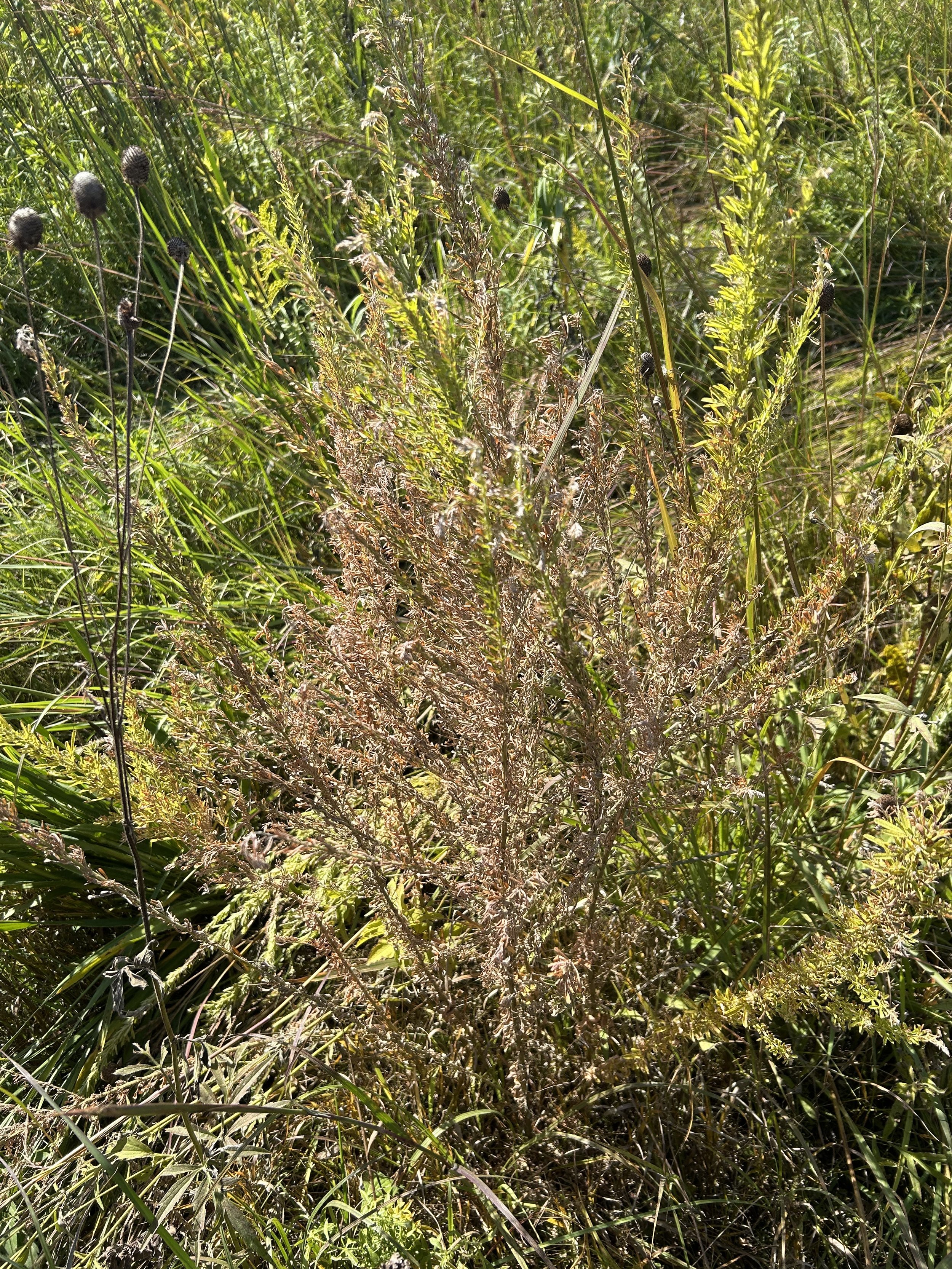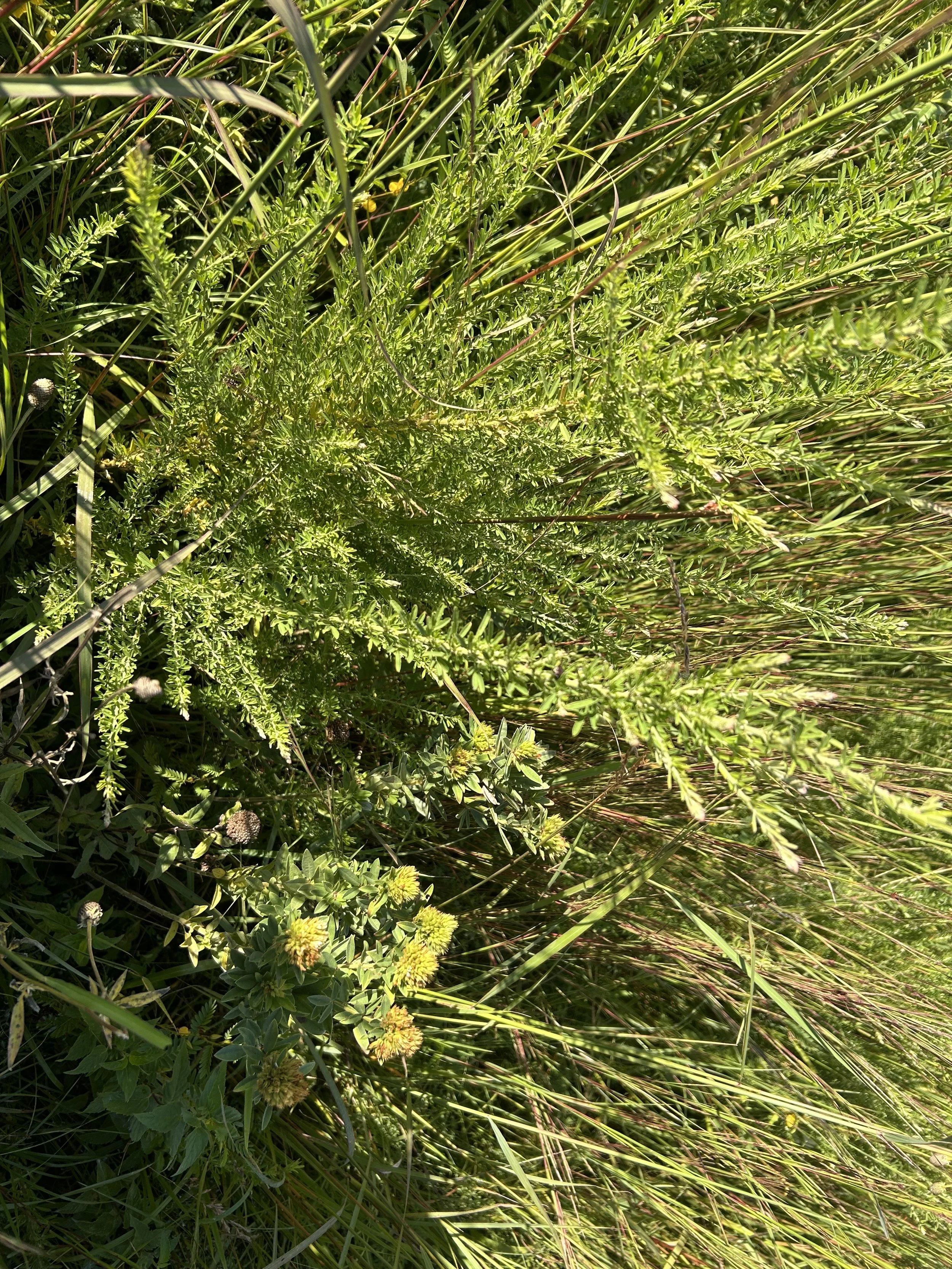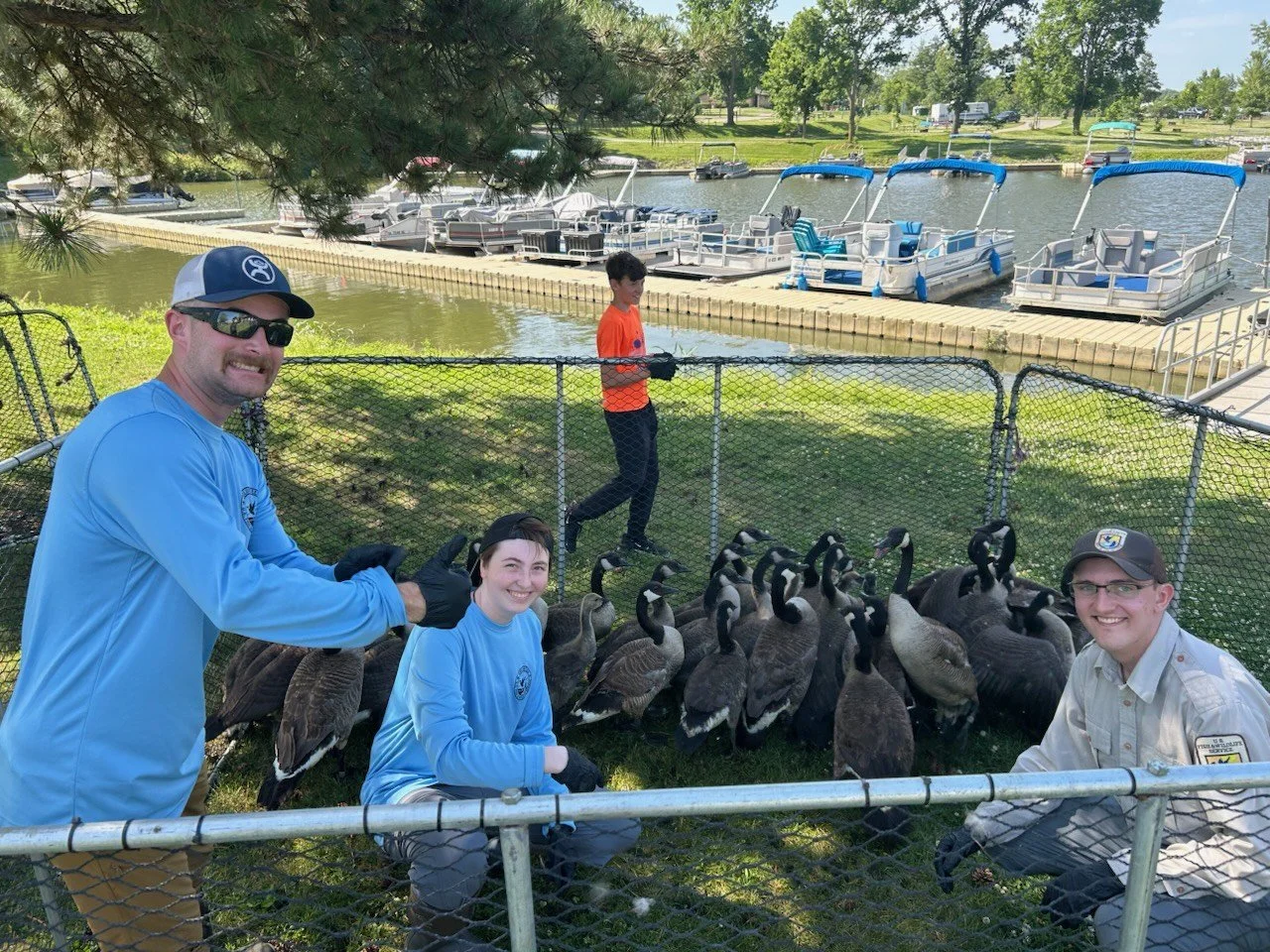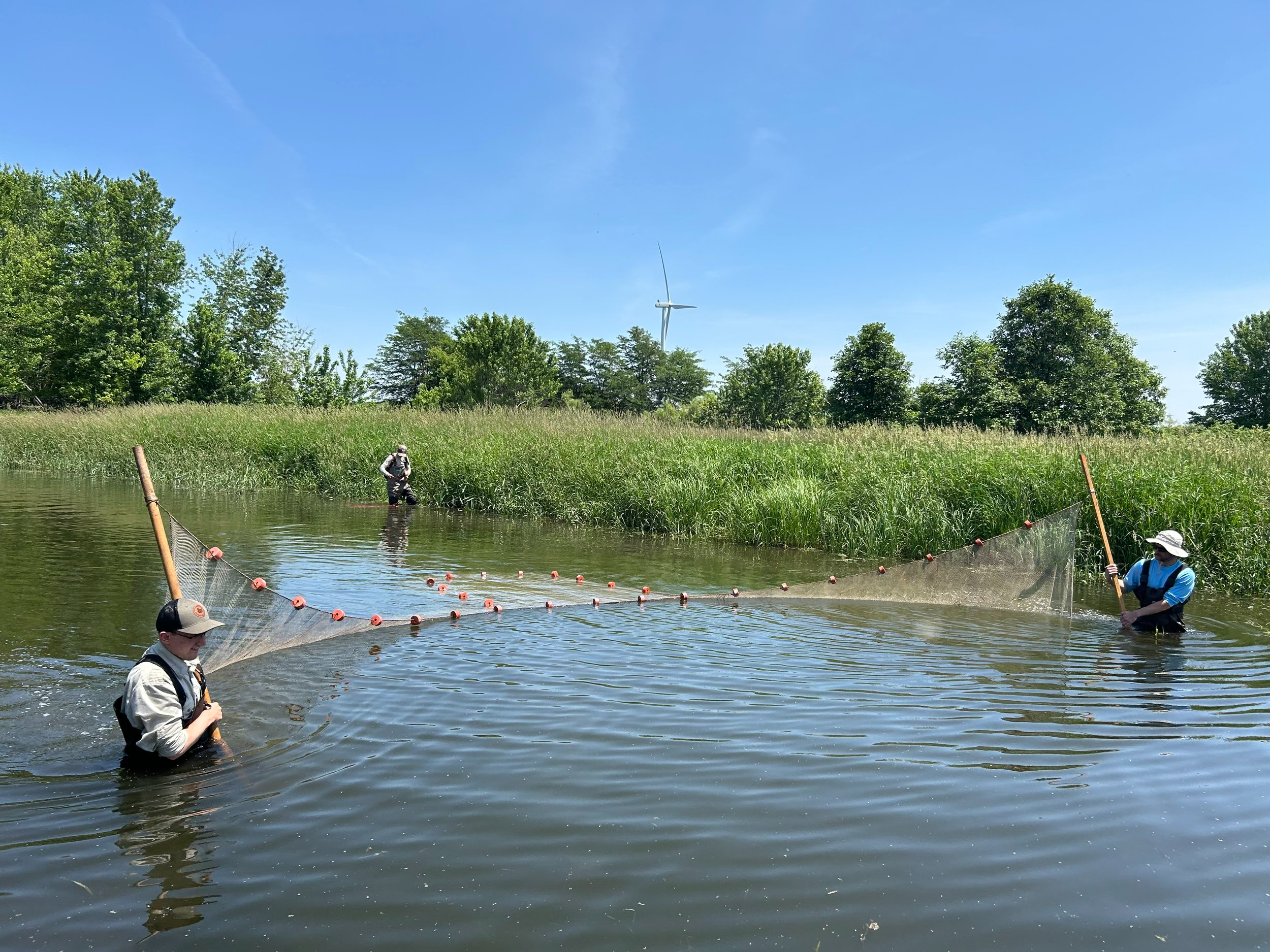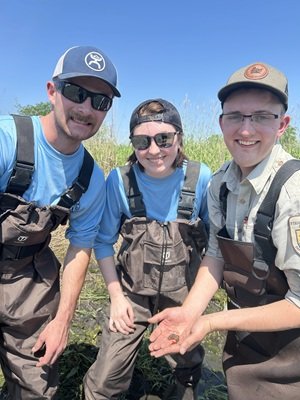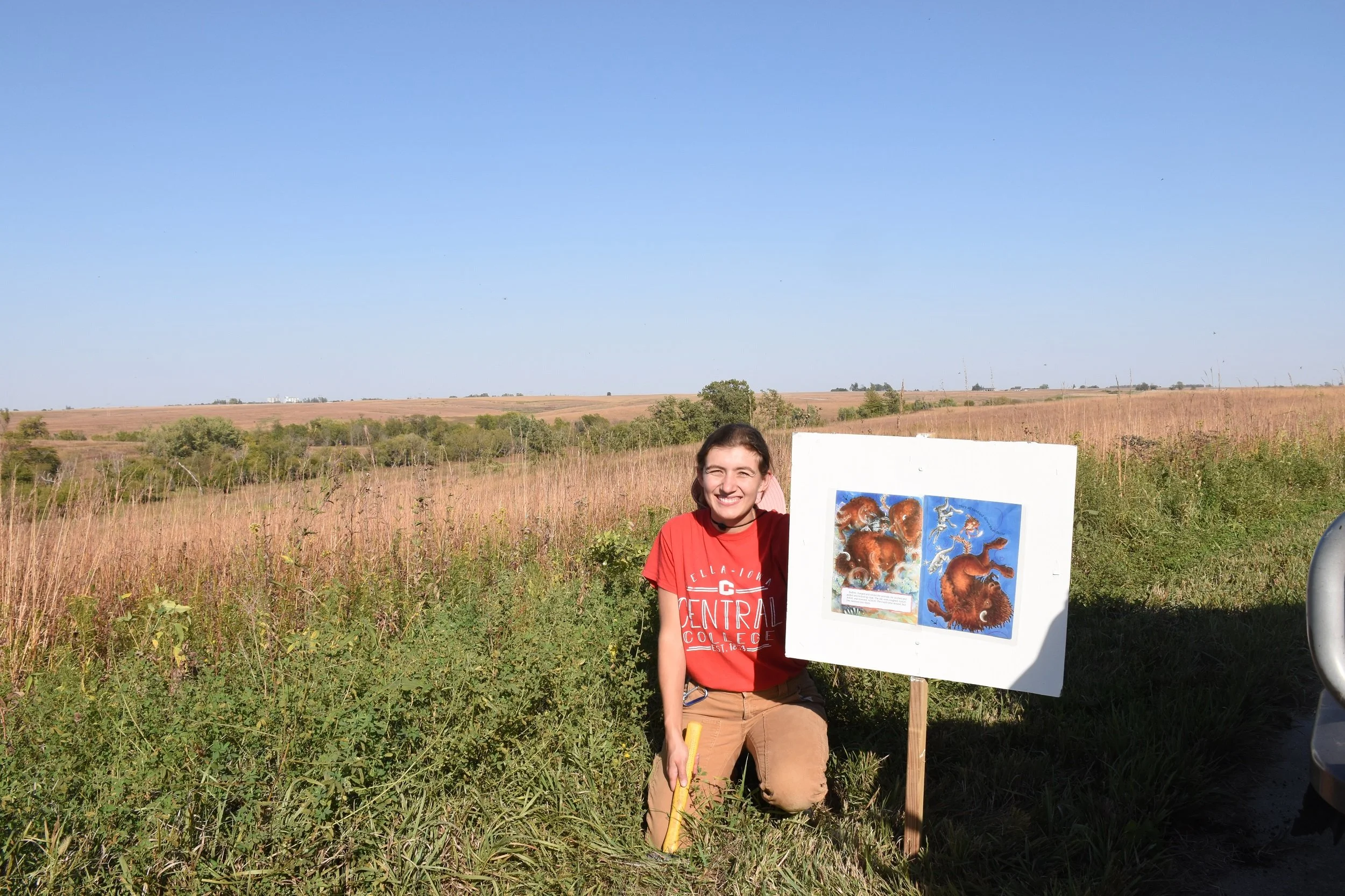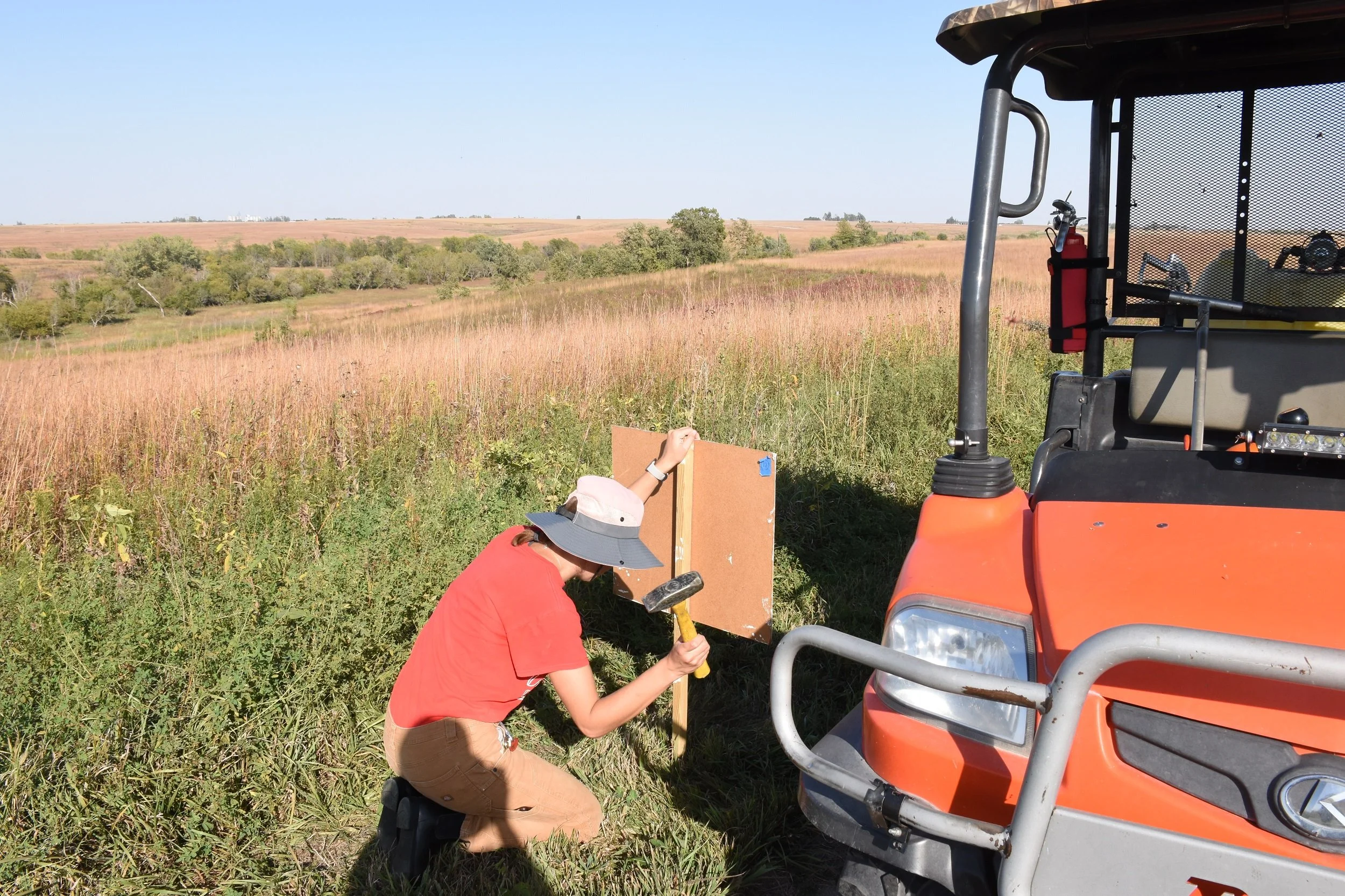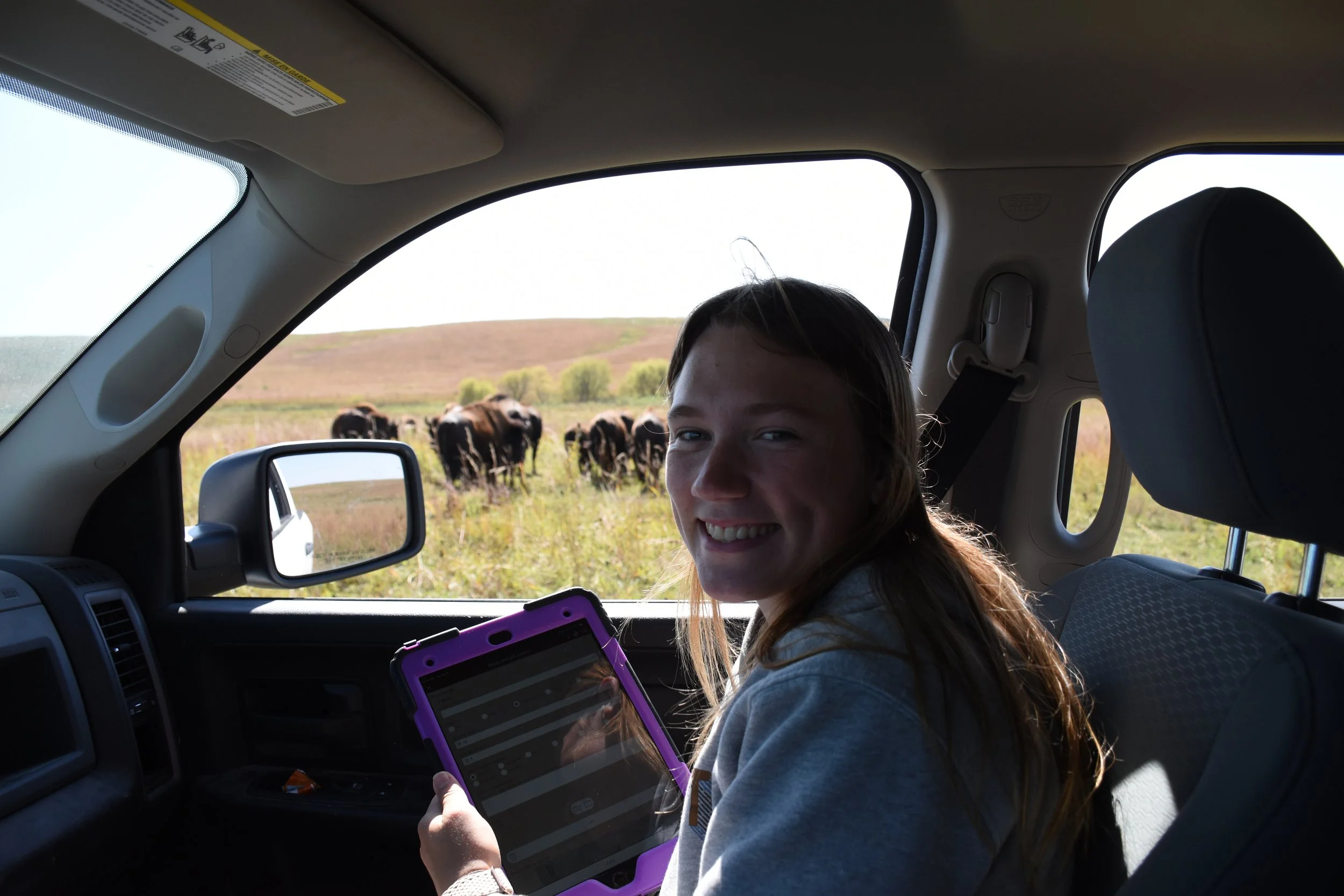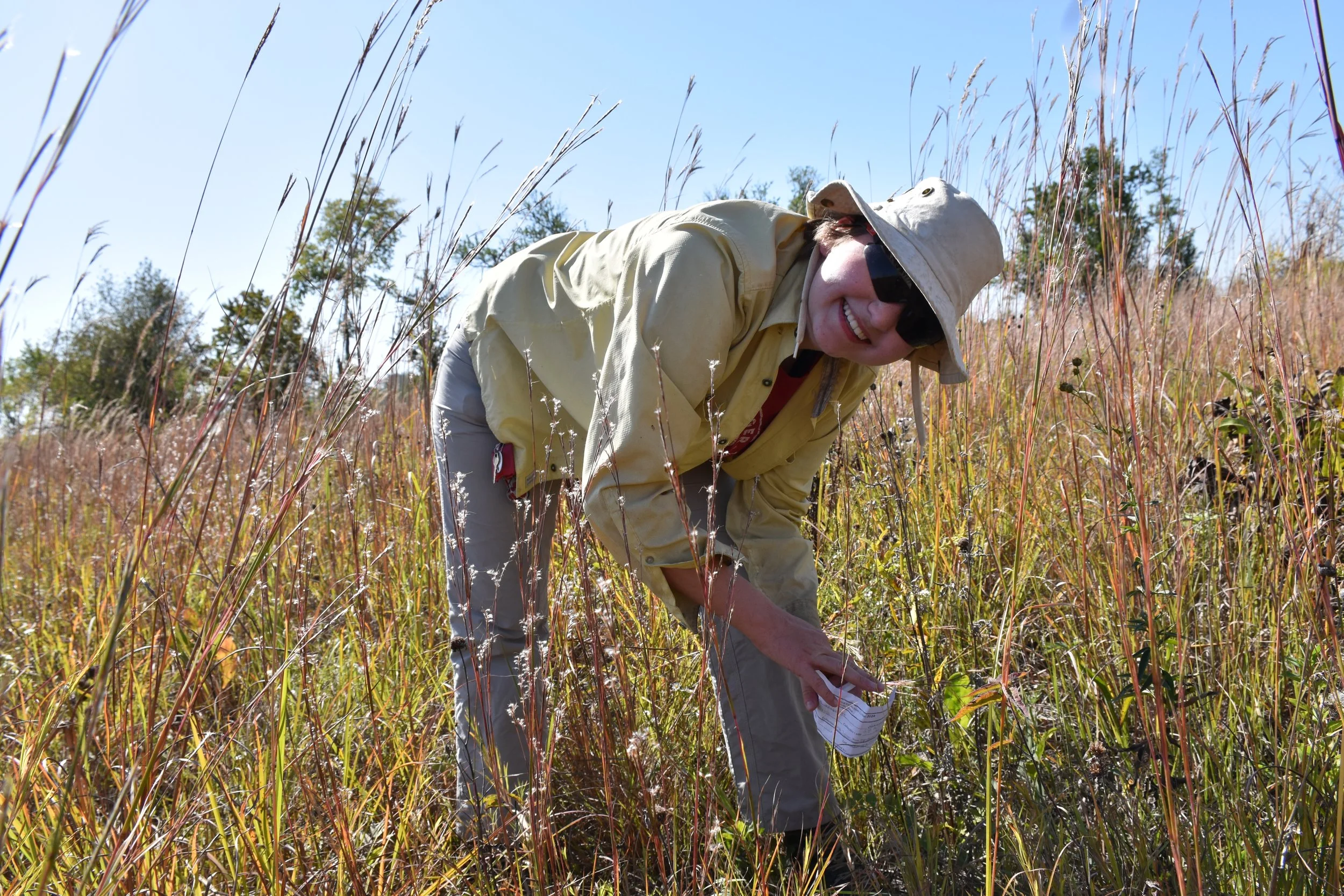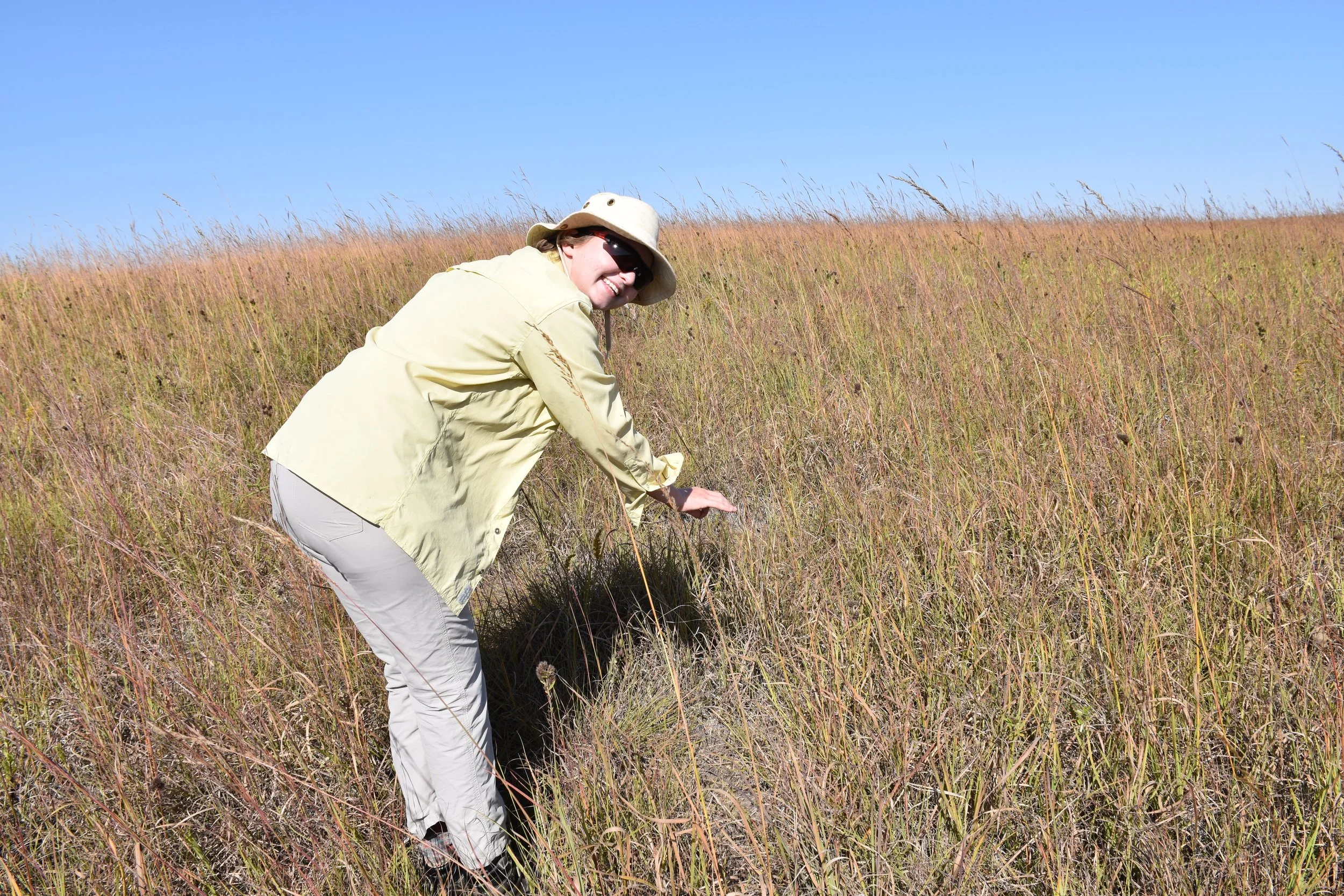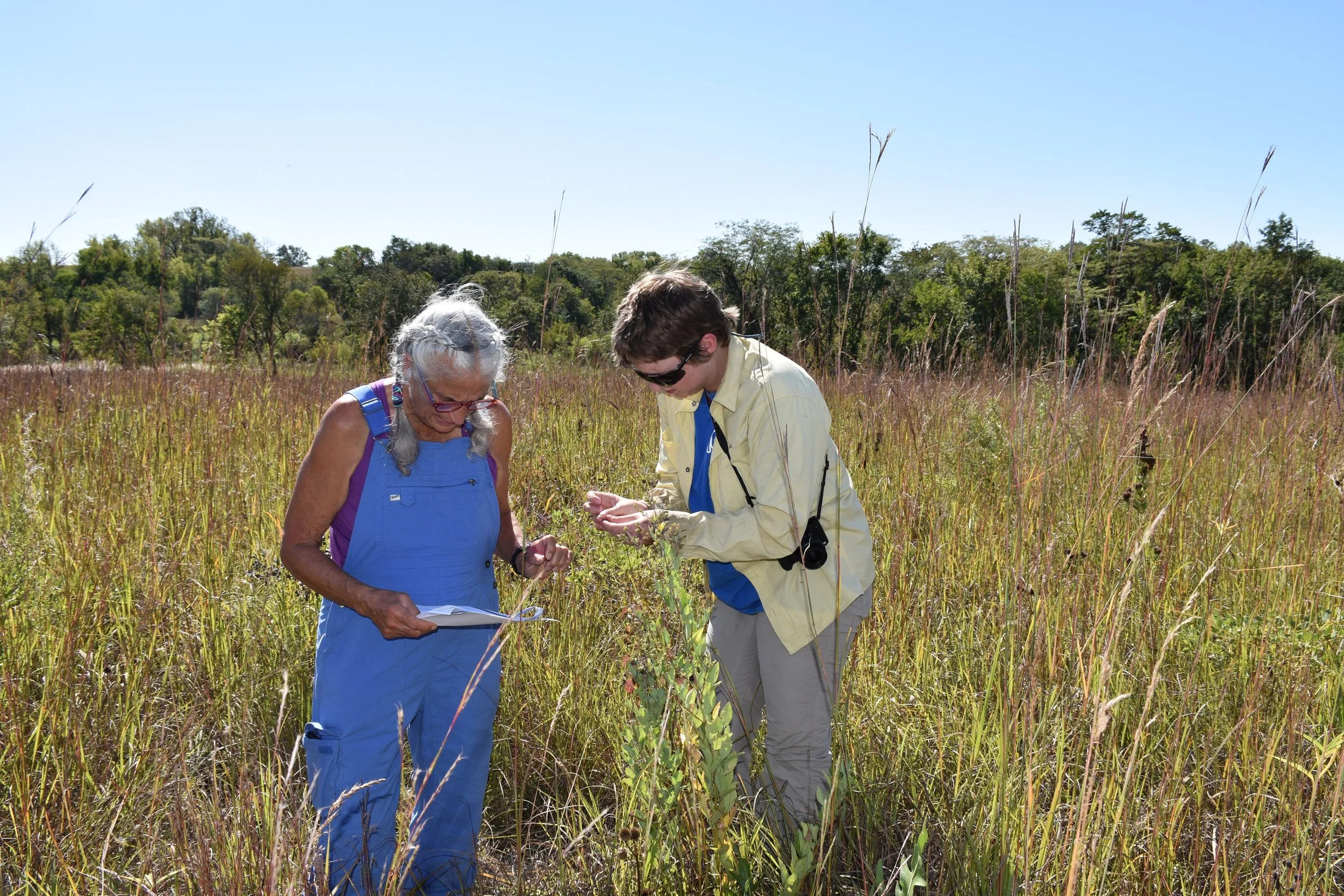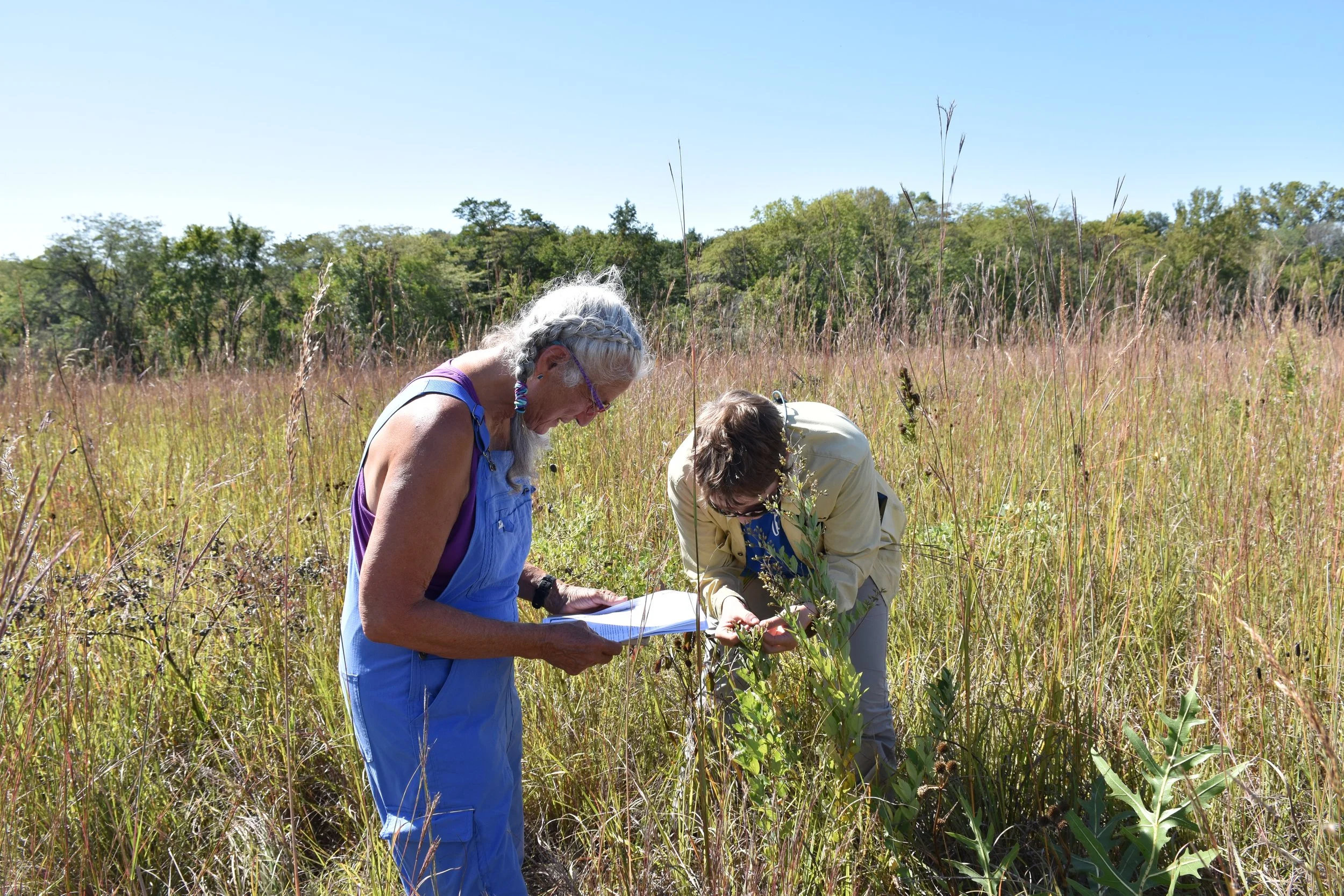
Field Notes
1. Notes from the interns on the important work they are doing at the Refuge.
2. Explanations of the work of the interns and why it is vital to the sustainability of the Refuge.
Ryan Kalal - Seasonal Biology Tech
December 12, 2025
By Ryan Kalal, Seasonal Biology Intern
Assisting Private Lands Crew
This week I assisted the private lands crew with some of their projects. I am helping private lands with an initial site visit where we took elevation points for a for a future wetland restoration, getting the ball rolling on a prairie restoration, visiting some contractors while they were digging for an oxbow restoration, and helping a landowner with a previous restoration project. The private lands crew helps private landowners and other organizations with restoration projects on their land through cost sharing, partnerships, and technical help.
December 4, 2025
by Ryan Kalal, Seasonal Biology Intern
Bison Care, Black Locust and Birds
This week I went out with our maintenance worker and placed mineral blocks for our bison herd. The bison were eager to get a lick of the blocks! Minerals blocks are the only supplement we provide for them as they are unable to find the minerals they need from within their enclosure. The bison find all the food and water they need within the 800 acre enclosure. I also continued the project of cutting, girdling and treating the black locust that is consuming the oak savanna. Nancy even came and joined the fun! While out on the refuge the American Tree Sparrows and Eastern Meadow Larks were vocal in their flocks. There was even a Northern Bobwhite Quail running down the road.
August 25 - September 5
By Connor Bennett
Summer Intern
We are spraying Sericea lespedeza (Chinese Bush Clover). Lespedeza can grow in extremely large patches, meaning when we spray, we sometimes lose the Round-Headed bush clover.See a lespedeza plant post-herbicide application. These results vary from one day to up to a week after application.
The brown plant is the lespedeza after application, while the other includes the lespedeza pre-treatment and the above-mentioned Round-headed bush clover.
The picture is the lespedeza (left) next to it's native cousin, lespedeza capitata (Round headed bush clover, right).
Spraying Sericea lespedeza (Chinese Bush Clover)
July 29, 2025
Norah Shires
2025 Summer Intern
This week we conducted a bison fecal matter assessment! This involved collecting 30 vials of fresh bison fecal matter. As unappealing as that may sound, it's important to be able to monitor the health of the herd. The samples will undergo parasite testing. It took us a few hours, and it was fun to watch their behavior as the day went on: calves playing with each other and adults grazing calmly beside them.
Bison Fecal Matter Assessment
July 16
Norah Shires
2025 Summer Intern
Invasive Plant Species Removal
Out at the refuge we have several invasive plant species; wild parsnip, birdsfoot trefoil, and lespedeza to name a few. Lespedeza is a particularly nasty one, and we are focusing on it heavily with pesticide for these next few weeks before it goes to seed. The pesticide tanks sit on a UTV, which we drive through the prairie and use a hand sprayer or the boom sprayer (nozzles on the back operated by a switch) on the target plant. Often a product called "Soy Stick" is used, which is an additive mixed into the pesticide to help it stick to the leaves.
Jun 24
Connor Bennett
2025 Summer Intern
This week we assisted the Iowa DNR with their Canada goose banding program. Banding the geese allows the DNR to track migration patterns after they have been harvested. The bandings took place at Oakland Acres golf course in Kellogg, Quarry Springs in Colfax, Rock Creek State Park, and at Central College. Over the course of 3 days, the DNR banded 599 geese!
Canada Geese Banding
June 13th
Norah Shires
2025 Summer Intern
This week we assisted with a Topeka Shiner survey! Topeka Shiners are an endangered small minnow-like species that like murky bottom waterways. For Iowa this means oxbows or streams. We went out and used a net to scoop up fish from the oxbows and counted them up, which is called seining. It was an absolute blast, and we even found some other cool species like darters and big tadpoles!
Topeka Shiner survey
June 5th
Norah Shires
2025 Summer Intern
This week we went out and learned how to do a bison and elk survey, which is how we keep track of how many individuals there are, how many calves there are, and the overall health conditions of the herd. We also record data of the day, like time, sky conditions, and ground conditions. Some individuals can be easily picked out by unique features they have, like horn shapes or irregularities!
Bison and Elk Survey
October 9th
Madison Zink, Visitor Services Intern
Without the ability to host classes in the Visitor’s Center right now, Nancy – the visitor services coordinator – and I have been brainstorming some fun ideas to keep the public involved and surprised when they come visit us in the prairie! With this goal I began to scope out some books in order to make Neal Smith National Wildlife Refuge’s first every Storybook Trail! Storytime with the kiddos has always been one of my favorite events. I believe that growing a child’s imagination is just as important as scientific skills! With this goal in mind, creating the trail became an all-staff teamwork event! I dug up some old signs in our maintenance building that we don’t use anymore. Evie and Scott helped me paint them before I taped on all the laminated pages. Then finally, despite the lack of rain, Evie and I persevered and installed the book signs in the dry dirt — Steve, the maintenance worker, had some tips and tricks to help us too. Now, visitors can walk the Overlook Trail, and enjoy the view of the prairie while also exploring Old Bag of Bones retold by Janet Stevens. This story is based on the Shoshoni tale “Old Man Coyote and Buffalo Power” and follows an elderly coyote, who believes himself to be just an old bag of bones. As he laments, he seeks help from a powerful bison to turn him young again. Will he learn the true wisdom that comes from age, or will he simply be the same trickster he always was?
Storywalk
October 10
Danica Linn
We go out once a week to do a bison and elk survey in order to keep track of herd numbers and to see how well their body condition is. By looking at the bisons body condition you can tell how healthy each individual is. We keep track of this by doing a survey on the iPad of health conditions and things to look out for.
Bison and Elk Survey
October 7
Evelyn Ince, Biology Intern
We spent time spreading a seed called Blue Eyed Grass (Sisyrinchium campestre). It is a gorgeous little plant that looks like a grass but is actually part of the Iris family! This species blooms in May-July, before most others, making it an important plant for early pollinators. Because of its small stature, it needs openings in the plant communities from either soil disturbance (bison, gophers, badgers, etc) or fire.
It also likes to be in full sun on well draining soil. In order to maximize germination, the seed should be spread before the first freeze in the fall or after the last freeze in the fall (preferably in the spring after the last frost). I talked with Scott about burn priorities for the upcoming year. Danica and I then went two one of those units to spread this seed directly onto the soil on rocky/sandy slopes. We then notate where we spread the seeds for future monitoring. This spring, the unit will burn and give this small early blooming plant a space to germinate.
Spreading Seed
October 2
Evelyn Ince, Biology Intern
About three weeks ago, I recorded a species we don't usually get in a monarch survey. During monarch surveys we monitor what vegetation is blooming at that moment so we can understand the correlation between blooming species and monarch abundance.
After struggling to key the species out on my own, Tenlea suggested including Pauline and asking for her opinion. We went out last week and keyed out the species with Pauline. Here are some pictures of this. Unfortunately, the plant is an invasive that we do know about but isn't a top priority at this point. It is officially ID'd as Shrub Lespedeza (Lespedeza bicolor). I've documented it on our invasive species map so that the next biologist has an idea that it is still here and apparently doing well in this unit.
Discovering a new species
Blue Eyed Grass (Sisyrinchium campestre) picture from Prairie Moon Nursery


